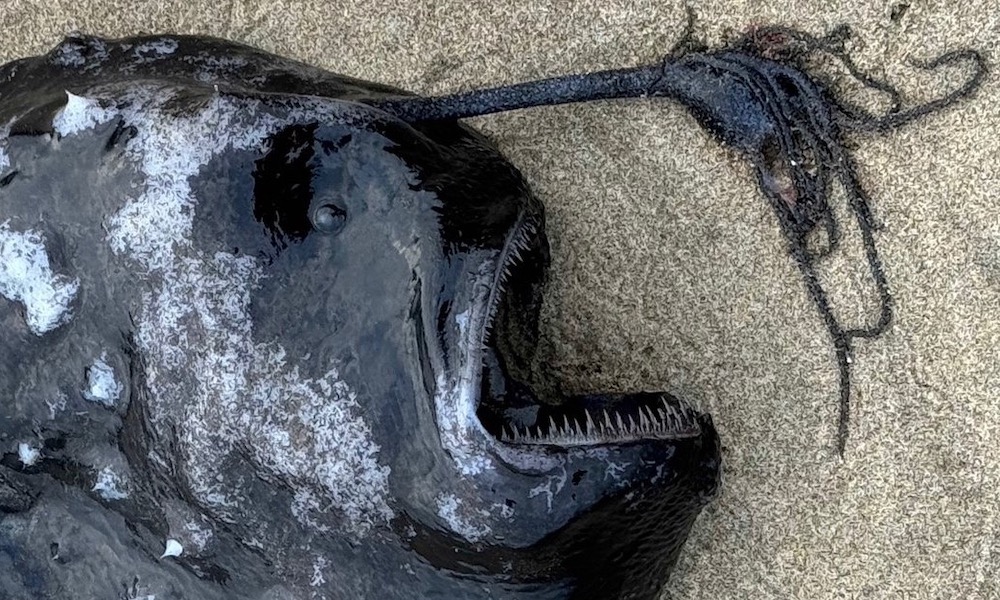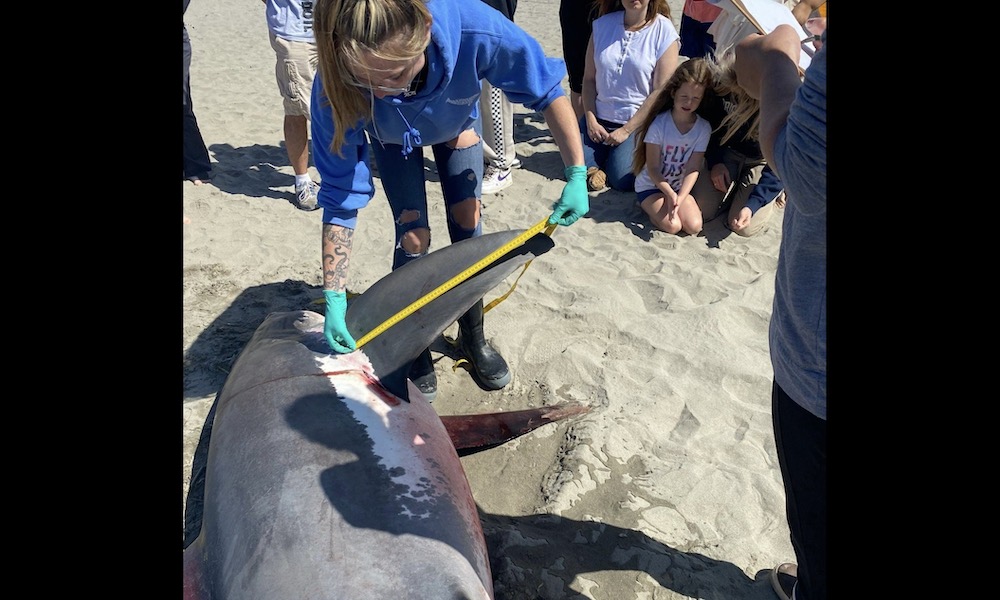A deep-sea anglerfish, known to live at depths between 2,000 and 3,300 feet, was found washed ashore on an Oregon beach by beachcombers.
The rarely seen specimen, also known as a Pacific football fish (Himantoliphus sagamius), was discovered just south of Cannon Beach, located about a 15-minute drive south of Seaside, the Seaside Aquarium reported Saturday.
“While a handful of football fish have been recorded in New Zealand, Japan, Russia, Hawaii, Ecuador, Chile and California, this is the first one reported on the Oregon Coast to our knowledge,” Seaside Aquarium wrote.
The deep-sea anglerfish is unique as it features a light that protrudes from its forehead and is used to lure in prey.
“They also have a lure, like all anglerfishes, that they use to attract prey. The deep-sea anglerfish’s lure is filled with bacteria that make their own light. Using a muscular skin flap, a deep-sea anglerfish can either hide or reveal its lighted lure. By pulsing the light and moving the lure back and forth, they successfully attract pelagic crustaceans, fishes, and other prey. The lure is also used to attract a mate.”
The deep-sea anglerfish is not a picky eater, and can’t afford to be since food at such great depths can be sparse.
“They eat anything that can fit into their mouths,” Seaside Aquarium stated. “Only females actively hunt as the males are actually more like parasites. Males being 10 times smaller than females, find a female to fuse themselves to. They lose their eyes and internal organs, getting all their nutrients from their female partners. In return, they provide females with a steady source of sperm. How the males find the females in the pitch dark is still unknown.”


